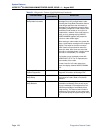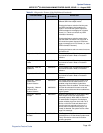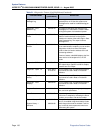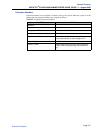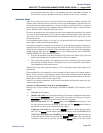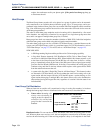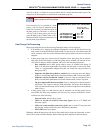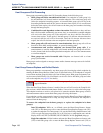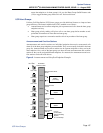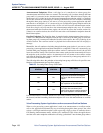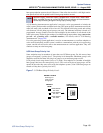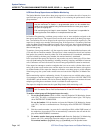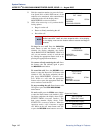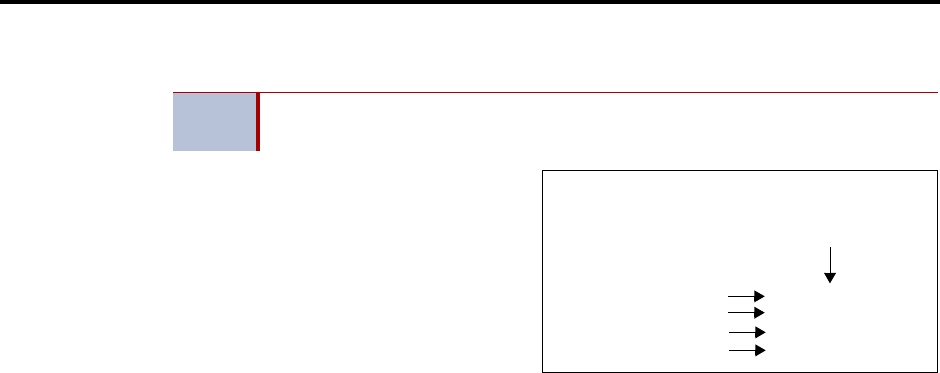
System Features
INTER-TEL
®
CS-5200/5400 ADMINISTRATOR GUIDE, ISSUE 1.1 – August 2005
Hunt Group Call Processing
Page 135
sion list are busy), or if there is no answer before the No Answer Advance timer expires, the
call goes to the next endpoint or extension list on the hunt group list.
If an extension list is included in a hunt
group, a call will ring all endpoints on the
extension list when it reaches that point in
the hunt group list. Therefore, to create an
“all ring” type of hunt group, you can pro-
gram the hunt group as either linear or dis-
tributed and then assign an extension list as
the only hunt group member.
Hunt Group Call Processing
Hunt group endpoints receive the following indications when a call is ringing in:
• If an outside call is ringing, the endpoint designated to receive the call first shows ring
flash on the associated individual trunk button (if it has one) or a Call button until the
call is answered or the No Answer Advance timer expires and the call moves to the next
endpoint.
• If hunt group camp on is allowed and all endpoints on the hunt group list are unavail-
able (busy, in Do-Not-Disturb, or with hunt group remove enabled), an intercom or out-
side call will camp on and the endpoints will receive the following indications:
— Busy endpoints receive hunt group camp-on tones (if enabled) and display. If
there is an individual trunk button associated with the trunk, it shows ring flash.
(There is a programmable endpoint flag that can disable the camp-on tones for
hunt group calls.)
— Endpoints with Hunt Group Remove enabled receive camp-on tones and display.
If there is an individual trunk button associated with the trunk, it shows ring flash.
— Endpoints with Do-Not-Disturb enabled receive no camp on indications, but if
there is an individual trunk button associated with the trunk, it shows ring flash.
— The first endpoint that becomes available receives ringing and a flashing trunk or
Call button. The camp-on and ring flash indications end at the other endpoints.
(The associated trunk button will be steadily lit at those endpoints to show that the
trunk is busy.)
• If hunt group camp on is not allowed, and all endpoints on the hunt group list are
unavailable, the hunt group members will not have any camp-on indications. Callers
will hear one of the following:
— Intercom callers will hear busy signals.
— Callers on a trunk not needed to return busy signal (such as a T1 E&M) will
hear busy signals.
— Callers on a trunk needed to return busy signal (such as a non-T1 loop-start) will
hear ringing, and the call will be sent to the primary Attendant.
— ISDN callers hear busy signals.
Endpoints within the hunt group can receive direct trunk ring-in, intercom, forwarded, or trans-
ferred calls to their extension numbers without affecting other endpoints in the hunt group.
NOTE
See “ACD Hunt Groups’’ on
page 143 for information on the additional distribution
types available in ACD hunt groups.
DISTRIBUTED HUNT GROUP CALL PROCESSING
Hunt group pilot
number 2000 called
EXT. 1000
EXT. 1001
EXT. 1002
EXT. 1003
1st call begins here
2nd call begins here
3rd call begins here
4th call begins here




